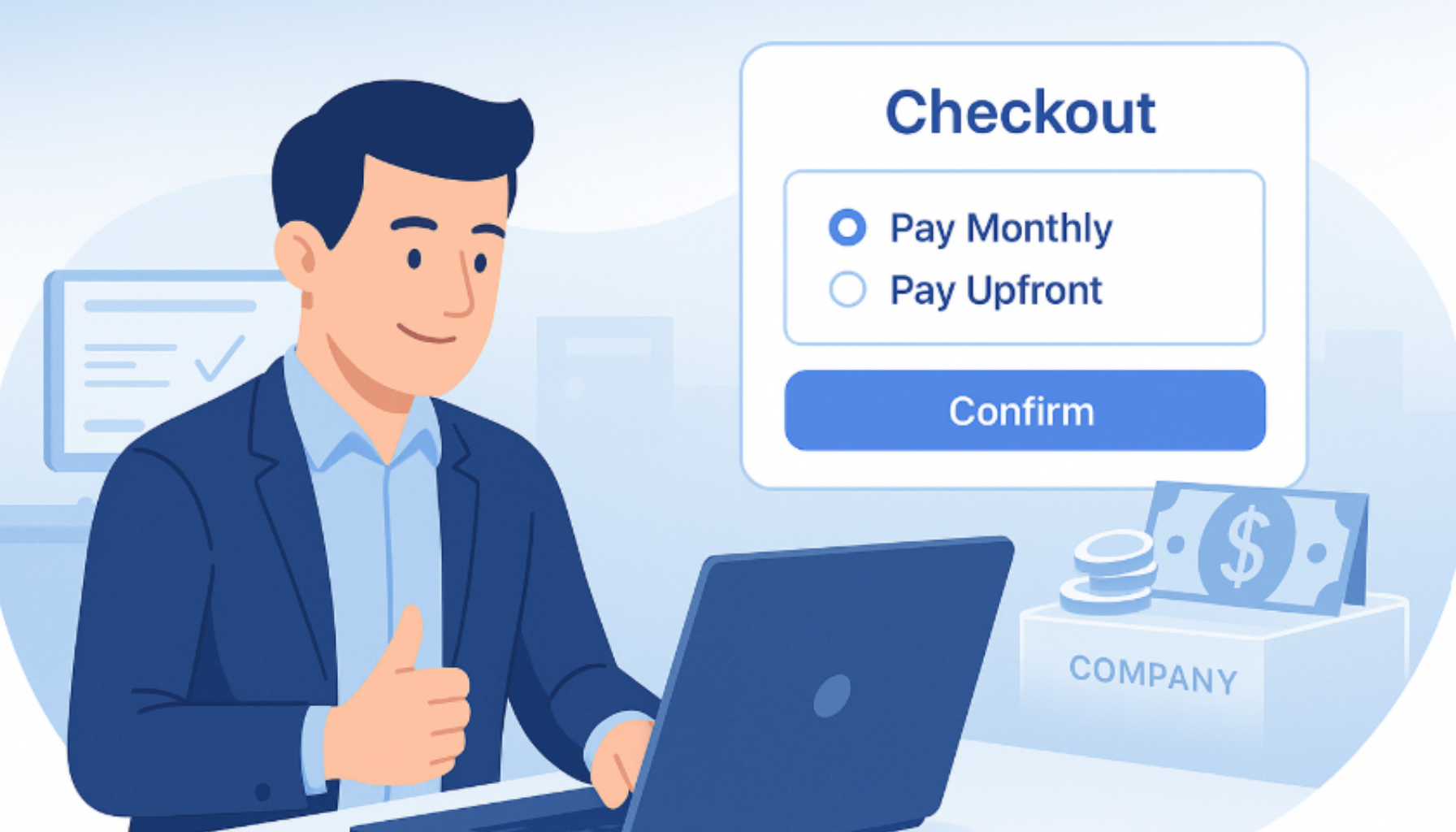Match Pricing: Good for Buyers, Good for Sellers
What do enterprises look for when making a software investment? They seek products that deliver results. But they also seek out solutions that are affordable, and that they can buy without going over budget. In other words, when it comes to buying software, most businesses weigh purchasing decisions in much the same way that consumers do, seeking a good deal at a fair price.
Given that, it’s strange that so few SaaS vendors offer consumer-style pricing options for enterprise buyers. If a consumer wants to buy a car but can’t afford the full sticker price, they are often given a range of pricing options to meet their needs: a customer might opt for lower payments over a longer period, say, ensuring they still roll away with a shiny new set of wheels.
Turn SaaS pricing into a win-win
When it comes to SaaS procurement, though, the options tend to be less user-friendly. Many subscription offerings require up-front payments, and if budget-conscious buyers balk at those terms, there’s no alternative option — they either have to pay up or say goodbye.
Fortunately, there’s a better way of doing things. The key is to stop viewing pricing as zero-sum, with sellers seeking the highest price possible and buyers, in turn, seeking the lowest possible total contract value. Instead, software vendors should explore ways to turn pricing into a win-win, delivering more value for customers while maximizing their total revenues over time.
The power of cash flow
The key to turning SaaS pricing strategy into a win-win is to recognize that for buyers, a dollar today doesn’t have the same value as a dollar tomorrow. A cash-strapped startup might be far happier paying a slightly larger amount over time, if it means they can keep their capital reserves intact today.
That makes pricing flexibility an important differentiator for SaaS brands in today’s competitive software marketplace. By enabling buyers to tweak pricing and payment processes to suit their own needs, it’s possible to deliver more value for customers — while netting more total revenues over the lifetime of their contract.
Help customers count their pennies
The current slowdown in VC funding and corresponding reductions in tech budgets make this an especially powerful tool for today’s SaaS vendors. Customers are counting their pennies — use this funding comparison calculator to quickly compare the cost of different financing and payment options; and if you can offer them smarter, more flexible ways to spread payments out over time, you’ll be seen as a valued partner rather than a drain on their limited resources.
How it works
A thriving frozen-desserts company with almost $350M in annual revenues was shopping for mission-critical SaaS products. Despite its healthy revenue streams, the company was budget-conscious and couldn’t afford the $60,000 per year fee initially quoted by their SaaS sales rep.
The sales rep tried following the standard “zero-sum” playbook: if the customer couldn’t pay full rate, then the only option was to start offering discounts. The rep offered a discounted quote of just $48,000 per year — but the desserts company still balked at having to pay such a hefty sum up-front.
Fortunately, the sales rep had another trick up her sleeve: she was able to offer a monthly payment plan. Instead of prepaying for a year’s service, the desserts company accepted a $4,800 monthly rate over a longer contract period. The result: a win-win deal that made the buyer happier, while also generating more revenues for the SaaS vendor.
Game-changing flexibility
Flexible pricing options are game-changers for both SaaS customers and vendors alike, and tools like Ratio Subscribers make it easy to offer monthly, quarterly, or custom payment plans without sacrificing cash flow. With the new fintech solutions now available; an out of the payment tech stack is needed to give their customers real choice and flexibility.
Advances in AI also allow providers to quickly assess the risk and growth potential of would-be buyers, enabling them to operate with confidence and offer a high degree of customization at checkout.
Aim for win-win deals
By leaning into these innovative new pricing strategies, SaaS businesses can provide the flexibility that their customers crave, create user-friendly sales processes, build stronger relationships, and still maximize their revenues over time — explore how to boost SaaS growth with flexible financing and checkout options.
There’s no need for SaaS dealmaking to be fraught — it’s time for vendors to change their approach, and turn SaaS pricing into a true win-win scenario. Want to learn more about SaaS pricing for your win-win scenario? Reach out to the Ratio Team today.









.png)


